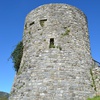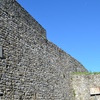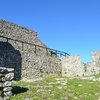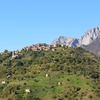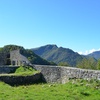Fort of Trassilico
Trassilico is located in a tactical position that permitted control of a large part of the Serchio Valley and the Val di Turrite in addition to the fortified towns of Vergemoli, Brucciano, Barga and Gragno.
In recent times, the fortess of Trassilico has been subjected to a substantial reconstructive intervention that has given it back its early seventeenth century appearance. Further, during the works, excavations brought to light the perfect hexagonal bedrock of a tower which was structured on several levels.
The wonderful altarpiece of 1540 which is preserved in the Church of Santi Pietro and Paolo, depicting the Virgin and Child Enthroned by Simone Carretta from Modena, is definitely worth seeing.
The fountain ("Fontanino") located at the town entrance is very dear to the inhabitants of Trassilico because it reinvokes the Spanish troops who stayed there in the first few decades of the sixteenth century.
Historical notes
Remembered simply as "site" in 995, Trassilico was a possession of the noblemen of Corvaia from a very remote era. It was later acquired by the Porcaresi who, in 1274, had to sell their rights to the settlement to the City of Lucca. The dominion of Lucca on the "Castrum Trasilic" was confirmed in 1376 by Emperor Charles IV of Bohemia.
Even Paolo Guinigi considered the "castello de Trasilica" of strategic importance, so much so as to order that it continue to be armed. With the Lord of Lucca's fall from grace, the people of Trassilico, fearing the incursion of the Florentine army led by Niccolo Fortebraccio, like many other lands of the Garfagnana gave itself peacefully to the Este, who in 1459 elected the village head of a vicariate, a decision later ratified in 1471. In 1524 Ludovico Ariosto, as governor of the Garfagnana, wrote that the fort was reduced "to such destruction, that perhaps the will to fix it would be, by now, too late". Restoration of the castle took place in 1613, during the war between Lucca and the Este family, on the basis of designs by military architect Pasio Pasi. Soon, however, the military structure again fell into a state of disrepair and towards the end of the eighteenth century it was totally abandoned.



